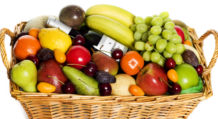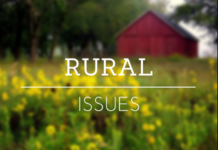by David Trinklein
University of Missouri
Division of Plant Sciences
Fans of the popular public radio show, A Prairie Home Companion, know that when life, seemingly, cannot get any worse, “one little thing can revive a guy, and that is a piece of rhubarb pie.” Whether the latter is truth or fiction, the fact is rhubarb is commonly known as the “world’s favorite pie plant”. Considered by many to be one of the joys of spring, March is an ideal month to plant rhubarb for those who might want to add this tangy vegetable to their garden.
Rhubarb (Rheum rhabarbarum) is a member of the Polygonaceae family, commonly known as the smartweed-buckwheat family in the United States. Its genus name (Rheum) is thought by some to be derived from ‘Rha’, the ancient name of the Volga River, on whose banks the plants grow. Others maintain the name stems from the Greek rheowhich, literally interpreted, means “to flow”. The latter, undoubtedly, is an intimation to the purgative properties of the root of the plant.
Rhubarb is an herbaceous perennial thought to be native to the eastern Mediterranean region and Asia Minor. It exhibits determinate growth from short, thick rhizomes. It has large, floppy leaves that are somewhat triangular in shape. Rhubarb bears many small flowers grouped in large compound leafy greenish-white to rose-red inflorescences. The plant is prized for its thick, crisp leaf stalks (petioles) that have a tart, sour taste.
The first recorded use of rhubarb dates back to 2700 B.C. when records show that its roots were used for medicinal purposes by the Chinese. An important drug at that time, it was used to treat malaria, constipation, “people who have delirious speech with fever” and many other ailments. The success of rhubarb as a medicine was not a placebo. It is now known that rhubarb roots contain phenolic compounds known as anthraquinones, such as emodin and rhein. The latter give the plant its cathartic and laxative properties.
By the 1st century A.D., rhubarb was being imported into Greece and Rome where it also was used as a medicine. Discorides, a noted Roman physician, pharmacologist and botanist around the time of Nero, extolled its medicinal virtues in his hallmark publication titled De Materia Medica (on Medical Material).
The explorer Marco Polo is credited for introducing rhubarb to Europe in the thirteenth century. There, it became a highly valuable drug that commanded great prices, and its economic value spawned a vibrant rhubarb trade. The plant was so highly regarded as a drug in Europe that it commanded a price three times higher than that of opium. By the early 15th century, rhubarb trade was part of the famous Silk Road during the era of its Mongol expansion.
The earliest known report of the use of rhubarb as a food dates back to 18th century Europe where it was used as a filling for tarts and pies. Ben Franklin is credited with being one of the first people to introduce rhubarb to the New World, when he sent seeds of the plant to the American Colonies. By the early part of the 19th century it was widely grown in New England and sold in vegetable markets there.
It was only when sugar became affordable to the middle-class that rhubarb’s popularity dramatically increased. Its popularity peaked just before World War II when sugar rationing made the consumption of rhubarb a bit harder to swallow.
Rhubarb is a cool-season, perennial vegetable and one of the first to be harvested in the spring. Growth normally begins when temperatures rise to the 40° F. range. Only the leaf stalks of rhubarb may be eaten safely. The leaf blades contain oxalic acid which crystallizes in the kidneys and, in extreme cases, can cause death. As mentioned above, rhubarb roots contain anthraquinones which have cathartic and laxative properties.
Like many other plants, rhubarb does not “come true” from seeds. Therefore, it is propagated via divisions from proven varieties such as ‘Valentine’, ‘Victoria’ and ‘Canada Red’. Rhubarb roots establish best when the weather is cool; therefore, propagules should be purchased as soon as they become available in the spring.
Rhubarb is a full-sun plant that should receive at least six hours of direct sun each day. At our latitude, a bit of afternoon shade can help rhubarb cope with hot weather. Although it will tolerate a variety of soil types, soil with excellent drainage and high in organic matter will tend to grow more productive plants. Rhubarb should never be planted where water stands at the base of the plant, or in soils with high clay content. The latter can be made acceptable for rhubarb production if internal drainage is improved. Ample amounts of composted manure or other forms of organic matter will improve poorly-drained soils.
Vigorous in growth habit, rhubarb is a heavy feeder and benefits from adequate amounts of fertilizer. The addition of about 2.0 to 2.5 pounds of a complete garden fertilizer (e.g. 10-10-10) per 100 square feet of garden area at the beginning of the growing season is recommended. A light side-dressing with a fertilizer high in nitrogen or the application of two to three inches of compost or manure after harvest has concluded will aid in the nutrition of rhubarb.
Plant rhubarb in a shallow trench so that each bud is about one-half inch below the surface of the soil. Since mature rhubarb plants are large, space plants two to three feet apart with in rows separated by at least the same distance. Firm the soil around the crowns and water in. Keep plants uniformly moist during establishment but avoid overwatering. It is best not to harvest rhubarb the year it is planted. Normal harvest should be possible the second year and thereafter.
Rhubarb curculio and stem borer represent the two main insect pests of the species. Both insects bore into stalks and tunnel into the crown and root system. This damage also is a pathway for entry for crown rots. Since insect damage becomes evident as plants begin to wilt, infested plants should be destroyed. Also, wild dock, a close relative of rhubarb, growing in the area should be destroyed since it can harbor these insects as well.
Harvest from healthy rhubarb plants lasts for about two month, beginning in early spring. To harvest, grasp the leaf stalk near its base and pull it to one side while twisting the stalk. Avoid harvesting rhubarb with a knife, since the resulting wound can encourage crown rot to develop. Make certain to remove the toxic leaf blade soon after the leaf stalk is harvest. This practice will encourage the leaf stalk to remain more turgid and crisp.
Also, it is consider a good cultural practice to eliminate flower stalks as soon as they can be detected. This forces the plant to put into its leaves and roots the energy that would have been used to produce flowers and seeds.
Freshly harvested rhubarb is quite perishable and should be stored in plastic bags in a refrigerator. Rhubarb that cannot be used within five to seven days after harvest can be frozen. Cut the leaf stalks into inch-long pieces and seal them in air-tight plastic bags. Frozen rhubarb keeps for about a year.
Rhubarb Trivia:
- Rhubarb is very high in vitamin K, and contains significant amounts of vitamin C, manganese, potassium, calcium and dietary fiber.
- Generally, the deeper the red color of a rhubarb stalk, the less tart it will be.
- In 1947, rhubarb was legally classified as a fruit by the U.S. Customs court in Buffalo, N.Y even though botanically it is a vegetable.
- Lanesboro, Minnesota is the self-proclaimed rhubarb capital of the state and holds an annual rhubarb festival featuring, among other activities, a rhubarb stalk throw contest.
- Rhubarb leaves are considered to be toxic and can be used to make a natural insecticide.
- The use of the word “rhubarb” to describe a heated argument is baseball was first made in 1938 by a sportscaster who thought the argument “suggested an untidy mess, a disheveled tangle of loose ends like the fibers of stewed rhubarb.”




